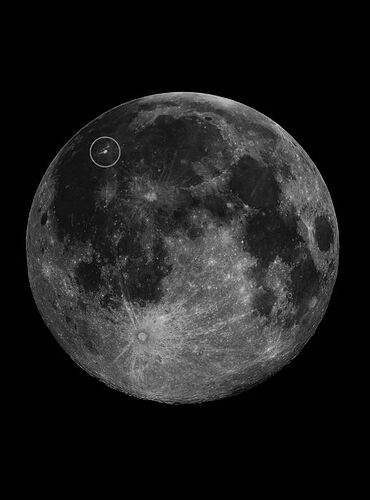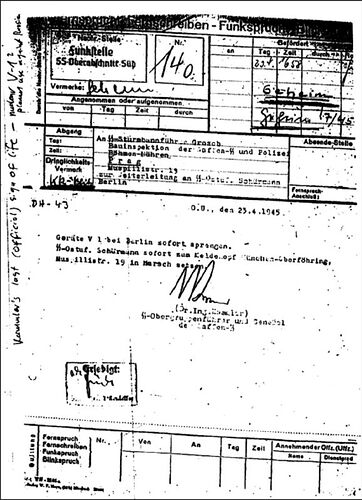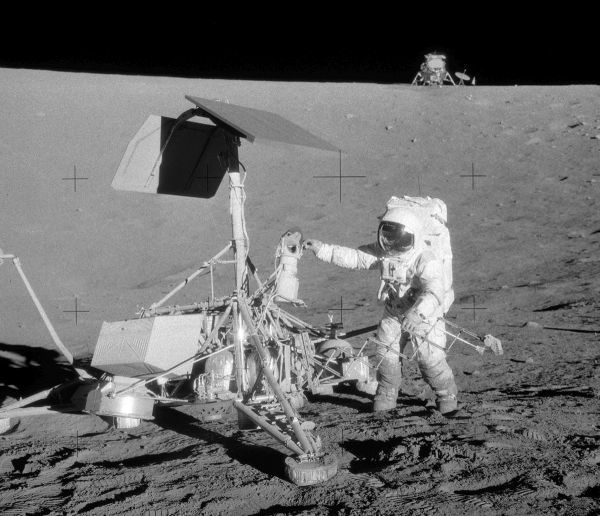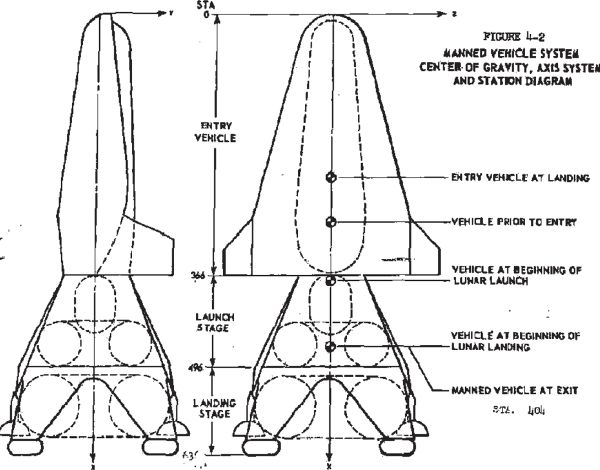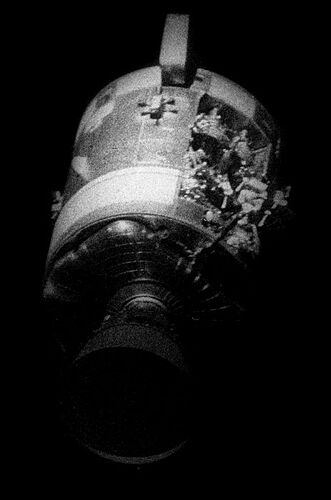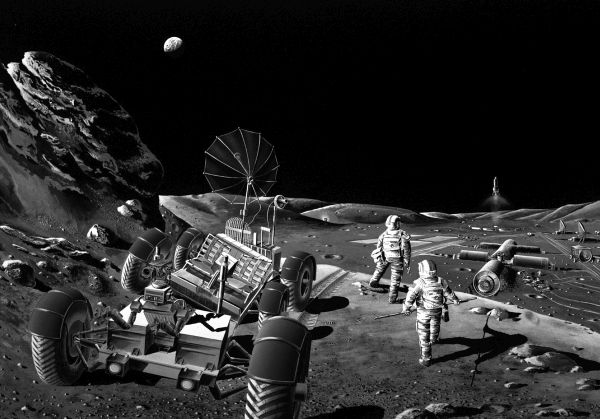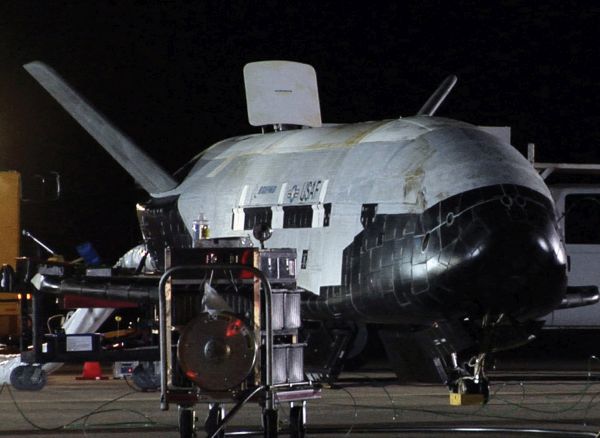List members , just remember this date & location - 3rd January 1948 , Operation Windmill , Antarctica.
This was the day on which "Station 211" , the secret Nazi base was found in an ABANDONED state by the US Navy...they had by then escaped to Walhalla base on the moon , under the lead of General Hans Kammler , known for the "Bifrost Protocol" . KGB too had documented this whole story...please read all 9 pages in the enclosed article - I have just copy pasted page 1 . This article has a goldmine of authentic , thoroughly researched chronological information , even down to the specific dates of events...it is NOT one of those cheap conspiracy websites :))
**At first , the above may sound bizarre and beyond far-fetched , but if you go deep into the facts of this story , it is the only logical conclusion you can draw . After the debacle of Operation High Jump in Feb. 1947 , the next mission to Antarctica , within a year - in 1948 , by the US Navy was codenamed Operation Windmill , which concluded on 16th Feb. , 1948 :-
https://royallib.com/read/Davis_Graeme/nazi_moonbase.html#0
Graeme Davis
Nazi Moonbase
Introduction
As 1944 began, the writing was on the wall for Nazi Germany. In the east, Soviet forces were advancing steadily after the disasters of Stalingrad and Kursk. To the south, fighting in Italy continued to drain men and materiel. In the west, American bombers pounded German industry and British night raids set cities ablaze as the Atlantic Wall defenses braced for an inevitable invasion.
While Hitler continued to spout rhetoric and exhort his troops to fight for every inch of land, other Nazi commanders made their own plans for the survival of the Third Reich. Jet aircraft, ballistic missiles, and other Wunderwaffen (Wonder Weapons) could delay the end, but not prevent it. Research continued at a frantic pace, but Germany’s atomic bomb program had yet to produce a new weapon and the projected Amerikabomber would be of little value without it. It was time to plan for the survival of the Reich after the fall of Germany.
As Berlin fell and many SS and Nazi Party leaders made their way to Argentina via the “rat lines” of the ODESSA network, the Nazi occult organization known as the Black Sun put a larger operation into place. Key personnel were smuggled out of Germany to a secret base in the Antarctic, codenamed Neuschwabenland. Commanded by SS-Obergruppenführer Hans Kammler, this facility continued work to develop advanced weapons and other technologies until it was discovered by the Americans in 1947. Although the US forces were driven off, Kammler knew that it was only a matter of time before they returned in greater strength. He gave the order to evacuate Neuschwabenland to an even more remote location: the surface of the Moon.
This book tells the story of the Nazi moonbase codenamed Walhalla and the project that created it, from the beginning of Nazi space research to the present day. The base is described in detail, along with the research projects that were transferred there from Earth. Also covered is the profound but largely undocumented effect that the existence of the Walhalla base has had on postwar history. From US and Soviet efforts to capture Nazi scientists, through the Cold War and the Space Race, to the abandonment of the Apollo project and the present-day unmanned exploration of the Solar System, the Walhalla base and the advanced technology it contains cast a huge shadow even today.
Identified as the site of the Nazi moonbase, the Aristarchus crater gives a clear view of the Earth while remaining in sunlight for most of the lunar day. (NASA)
The Bifrost Protocol
The Nazi leadership knew by 1942 that Wunderwaffen offered Germany’s only chance of winning the war. The Blitzkrieg had stalled, the Allies were preparing to fight back, and Germany had neither the men nor the resources to fight a protracted war.
Operation Sea Lion, the planned invasion of Britain, had been postponed indefinitely in September 1940, and the Luftwaffe’s eight-month Blitz of late 1940 and early 1941 had failed to put Britain out of the war as Hitler had intended. The Royal Air Force continued to bomb German industrial targets, and the United States entered the war in December, raising the specter of countless American troops invading the Continent from southern England and turning the tide of the war, just as they had broken the stalemate of World War I in 1917.
Things were no better on the Eastern Front. Despite Hitler’s rhetoric, Operation Barbarossa had failed to bring about the collapse of the Soviet Union. German forces had been thrown back 200 miles from the gates of Moscow, and the Red Army was rebuilding in the east. Unless a decisive blow could be struck, it was only a matter of time before Germany was crushed between the Western Allies and the Soviet Union.
The development of Wunderwaffen was given the highest priority. Several jet aircraft projects were already under way, including the Messerschmitt Me 262 fighter and the Arado Ar 234 bomber, but the Reich’s greatest need would be for long-range weapons that could be launched from Europe to destroy targets as far away as North America and Siberia.
The first fruits of the Wunderwaffen initiative were the V-1 cruise missile and the V-2 ballistic missile, which entered service in June and September 1944 respectively. Resources were poured into the development of an atomic bomb: the Amerikabomber project and the A-9 rocket aimed to provide intercontinental-range delivery systems for nuclear warheads.
Other long-range bombardment initiatives sound like science fiction. The Oberth Sonnengewehr (Sun Gun) was a huge orbiting mirror designed to incinerate cities like ants under a magnifying glass. The V-3 supergun had a barrel 430 feet long and could fire a 150mm shell more than 100 miles.
As the tide of war turned against Germany, work on all these projects was hampered by Allied air raids and increasing material shortages. By March of 1945, even the most ardent Nazis knew Germany was doomed — but some dared to think beyond the defeat of Germany and make plans for the Reich to fight on and win eventual victory.
The Order of the Black Sun
Founded as an elite within an elite, the Order of the Black Sun had its origins at Heinrich Himmler’s SS academy at Wewelsburg Castle in Westphalia. It took its name from a symbol on the floor of the Obergruppenführersaal, or Generals’ Hall, which can still be seen there.
The symbol of the Black Sun was based on the design of brooches worn by the Germanic Allemani people during the post-Roman period. It resembles a sun emitting twelve jagged rays, and has been described as a triple swastika representing the sun at sunrise, noon, and sunset.
Its origins in Nazi symbolism date back to the writings of Helena Blavatsky and Karl-Maria Willigut, two of several mystical writers of the 19th century who inspired various facets of Nazi occultism. More on this subject can be found in Kenneth Hite’s The Nazi Occult, also in this series. The Black Sun represented a source of energy allegedly known to the ancient Aryans, which would shine over the rise of the New World Order.

The Black Sun design represented a mystical power source and a design used by the medieval Germanic Alemanni. (Ratatosk under the Share Alike creative commons license)
Wewelsburg
In 1934, Heinrich Himmler rented Wewelsburg Castle from the local government of Westphalia for 100 years at the token rent of one mark per year, and set about refurbishing it as an SS academy and research institute. While it is true that certain chambers were renamed after characters from the Grail Romances, claims that Himmler intended Wewelsburg to be the new Grail Castle are exaggerated. However, he did envisage it as the functional and spiritual center of his new religion.
Himmler had long despised Christianity for its Jewish roots, and was in the process of formulating a Germanic faith for the Aryan race. Hitler expressed his opposition to the idea of völkisch religion and occultism as a part of National Socialism, both in Mein Kampf and in public speeches, but Himmler was determined that the SS — his state within a state — should have an ideology of its own, based on solid Germanic roots. The new religion would ensure that members of the SS would never feel torn between the principles of Christianity and Nazism.
Among its other functions, Wewelsburg was to be the center of this religion. After 1941, it was often referred to in documents as “the center of the world.” While Hitler and his architect Albert Speer planned a new world capital in Berlin, Himmler planned Wewelsburg as a spiritual and intellectual capital.
The Rise of the Order
It was against this background that the Order of the Black Sun came together. Its members sought to combine science, politics, and mysticism into a single driving force that would underpin the new world order, and place themselves — as the masters of this new thinking — in effective control of the world.
Although Himmler maintained a mask of servility — Hitler nicknamed him der treue Heinrich,“loyal Heinrich” — by 1941 his ambition to succeed Hitler as Führer, and their differences over völkisch mysticism, led him to keep much of Wewelsburg’s work secret. This work included the development of ideas and technologies that had originated within the Thule Society (Thule Gesellschaft) and the Vril Society (Vril Gesellschaft). The Thule Society had been disbanded on Hitler’s orders in 1935, along with the Freemasons and other organizations, while the Vril Society was on the brink of a schism: its leading “Vril medium,” a woman known to history only as Sigrun, insisted that its knowledge — especially the propulsion system used in the Vril series of saucer craft — should be used only for peaceful purposes. More information on both these societies will be found in the next chapter.
Even as Himmler began to distance Wewelsburg from Hitler, though, the Order began to distance itself from Himmler. Many leading members of the Order felt that Himmler’s emphasis on the development of his Aryan religion was a distraction from the more urgent goal of developing the superscience, and superweapons, that would enable Germany to win the war; as the tide of the war began to turn, their frustration drove them to keep more and more from their former leader.
With Britain undefeated, the Soviet Union on the counterattack, and the United States poised to launch a European front, the Order looked for a way to save Germany — or if this was impossible, to ensure the survival of their work and plan for the creation of a new Aryan state. The man they chose to lead this effort was a rising SS star named Hans Kammler.
Hans Kammler
Hans Kammler was born in Stettin (now Szczecin, Poland) on August 26, 1901. At that time, Stettin was part of the German Reich ruled by Kaiser Wilhelm II. After World War I, he studied civil engineering in Danzig (now Gdansk) and Munich and was a member of the Rossbach Freikorps, a far-right paramilitary group whose members included a young Rudolf Hess. Kammler joined the Nazi Party in 1931 and the SS in 1933.
Kammler held various administrative posts in the Nazi government, starting as head of the building department in the Air Ministry (Reichsluftfahrtministerium). He joined the Waffen-SS in June 1941, and became Oswald Pohl’s deputy at the SS Main Economic and Administrative Department (SS-Wirtschafts-Verwaltungshauptamt), whose duties included oversight of the concentration camp system.
Kammler was an ardent Nazi with a gift for organization which led him to the command of all Wunderwaffen production. (Artwork Hauke Kock)
In 1942, Pohl assigned Kammler to construct facilities for various advanced weapons projects, including the Me 262 jet fighter and the V-2 ballistic missile. He rose quickly, largely thanks to his notorious expedient of using concentration camp prisoners as a source of slave labor. Hitler placed him in charge of all V-2 production, as well as transferring the responsibility for jet aircraft production from Hermann Goering to Kammler. On March 1, 1945, Kammler was promoted to the rank of Obergruppenführer, making him answerable only to SS chief Heinrich Himmler. A few weeks later, all special weapons development and manufacturing projects were absorbed into Kammler’s SS Development Agency IV (SSEntwicklungstelle IV, known as SS E-IV). Only Wernher von Braun’s Peenemünde rocket group remained outside Kammler’s control, and this only because of von Braun’s obstinate refusal to acknowledge Kammler’s authority. The conflict between Kammler and von Braun began as a simple clash of personalities, but came to have a profound effect on the history of manned space flight.
No one else in the Third Reich had such a comprehensive understanding of the new technologies being developed. As Germany crumbled, Kammler assembled a hand-picked team of scientists and devised a daring plan — to build a base on the Moon, bombard the Allied homelands with impunity, and return to Earth victorious once they had collapsed.
Officially, Hans Kammler committed suicide in May 1945, but the credibility of the supposed eyewitnesses has been challenged multiple times. The US Army Counterintelligence Corps (CIC) launched an unsuccessful hunt for him later in May. One former Office of Strategic Services agent claimed to have brought him to the United States, but this claim was never confirmed. By 1949, Kammler’s name simply vanishes from intelligence documents, without any explanation.
This memo ordering the destruction of a “V-1 device” (possibly a prototype of some kind rather than a V-1 flying bomb) is dated April 23, 1945 and bears Kammler’s signature. It is the last trace of Kammler in Europe. (PD)
Kammler’s Plan
Kammler named his plan Protokoll Bifrost (The Bifrost Protocol) after the rainbow bridge of Norse myth that linked the mortal world of Midgard to the divine realm of Asgard. Simply put, it was a three-point plan to ensure Nazi survival — and eventual victory — after the fall of Germany. Its objectives were as follows:
Escape
The first priority was to ensure that all the necessary technology, personnel, and resources were placed out of the Allies’ reach. In Kammler’s original documents, dated to early 1944, this phase of the operation was codenamed Walküre (Valkyrie), but it was renamed Einherjar after July 20, 1944, when a group of disaffected officers launched a failed attempt to assassinate Hitler under the codename Walküre.
In Norse myth, the einherjar were the warriors found worthy of admission to Valhalla. This was a perfect metaphor for Kammler’s careful selection of projects and personnel, but it turned out to be too perfect. By now, Alan Turing’s Bombe computer at Bletchley Park had cracked the German Enigma code, and MI6 quickly deduced that signal decrypts featuring the codename Einherjar referred to some Nazi effort to evacuate key personnel and technology from Germany. This intelligence resulted in the British launching Operation Surgeon and the Americans launching Operation Paperclip, which were intended to intercept and retrieve Nazi scientists and exploit their knowledge.
SURGEON AND PAPERCLIP
In the months either side of the war’s end in May 1945, Allied intelligence officers made a concerted effort to recover and turn German personnel who had been employed on advanced technology. Operation Surgeon was run by British Intelligence and Operation Paperclip by the US Office of Strategic Services. The latter’s most notable success was the recruitment of Wernher von Braun and others of his Peenemünde rocket research group, who went on to play key roles in the American space program.
The stated purpose of both operations was to ensure that German advanced technology stayed out of Soviet hands: with the end of the war in sight, it was clear that the postwar world would be dominated by the rivalry between the capitalist West and the communist East.
The second, and perhaps more important, goal of these operations was known only to a few individuals in the very highest intelligence circles. From what Western intelligence agents had been able to discover about the Bifrost Protocol, it was clear that some Nazis had escaped and intended to fight on, using what MI6 chief Sir Stewart Menzies called “a continuation of the V-weapon offensive, conducted from some remote spot and using weapons of extremely long range with the goal of destroying the major cities of every Allied nation.” The highest priority was given to uncovering more information about this planned offensive, and the recovery of any technology that could help thwart it.
Bombardment
Once established on the Moon (codenamed Walhalla), the second phase of the Bifrost Protocol would begin. This phase, codenamed Mjölnir after Thor’s mighty hammer, would see the development of Wunderwaffen capable of bombarding Earth and wiping out entire cities. This armament would be used to destroy the major cities belonging to the principal Allied powers — the United States, the Soviet Union, Britain, and France — and leave them with neither the population nor the industrial capacity to resist the third phase of the operation.
Kammler acknowledged that this would be the most critical phase of the Bifrost Protocol. In particular, he was aware that the Walhalla base would be living on borrowed time. Once the Allies became aware of the Walhalla base’s existence, they would surely devote all their vast scientific and manufacturing resources to the task of developing weapons that could reach it and destroy it. Mjölnir would have to achieve its objectives before they could do so.
Return
The final phase of the Bifrost Protocol was codenamed Gungnir after Odin’s deadly spear. With the Allied powers on their knees, the personnel of Walhalla would return to Earth as conquerors, raise up the fallen German nation, and establish an eternal Fourth Reich built upon the principles of the Third.

The Haunebu IV saucer received its final fitting-out at the Neuschwabenland base. Barely airworthy in mid-1945, it managed to evade the Allied advance and limp to Antarctica. This giant craft was to form the core of the moonbase.
Antarctica
By March 1945, the Western Allies had crossed the Rhine and the Red Army was pushing westward from Vienna. Kammler knew that the first phase of the Bifrost Protocol had to be put into effect soon, but there was a problem: the massive Haunebu IV saucer, whose carrying capacity was vital to the evacuation plan, was not yet spaceworthy. With his characteristic efficiency, however, Kammler had foreseen this possibility and formulated a contingency plan.
The German Antarctic Expedition of 1938 had laid claim to a vast amount of territory on the continent of Antarctica, naming the territory Neuschwabenland (New Suebia) after one of Germany’s ancient duchies. Although the Allies had ignored the Neuschwabenland territory, Kammler had not. In the closing months of the war, Kammler used the Haunebu craft, along with a fleet of U-boats, to move SS E-IV assets to Neuschwabenland.
The Haunebu IV limped out of Prague ahead of the Soviet advance, reaching Antarctica a few hours later after a flight beset with minor technical problems. When Kammler made the decision to take off, chief saucer engineer Klaus Habermohl was in the city scrounging for materials: he was captured by the Red Army on May 11, showing just how close the Russians came to capturing the craft itself and thwarting Kammler’s whole plan.
Through 1946, Kammler and his remaining followers worked to develop the Antarctic base into a working development and manufacturing facility which would enable them to continue the war. While the Haunebu IV completed its fitting-out, work continued on various other advanced weapons projects as materials and facilities permitted.
Artist’s impression of the air battle in February 1947 which prompted the execution of the Bifrost Protocol. Although the American task force was repulsed, it was clear that the Antarctic base was not secure. (Artwork by Darren Tan)
Regards

